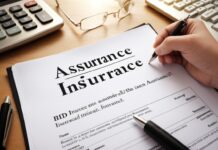Car Leasing with Insurance: Navigating the Road Together
Owning a car comes with numerous advantages, but the financial burden of purchasing and maintaining one can be daunting. For many, car leasing emerges as a cost-effective and flexible alternative. However, navigating the intricacies of leasing often involves questions about insurance. This article delves into the world of car leasing with insurance, exploring their relationship, key considerations, and helpful tips for a smooth ride.
Understanding Car Leasing
Car leasing allows you to drive a brand-new car for a predetermined period, typically two to four years, in exchange for monthly payments. Instead, you have the option to return it, purchase it at a pre-determined residual value, or extend the lease. Leasing offers several benefits, including:
- Predictable monthly payments: Knowing your exact monthly cost for the lease term eases budgeting and reduces financial uncertainty.
- Lower upfront costs: Leases typically require smaller down payments compared to traditional car loans, making them more accessible.
- Access to latest models: Leasing allows you to drive the latest car models without committing to long-term ownership.
- Reduced maintenance worries: Many leases include factory warranty coverage, minimizing out-of-pocket expenses for repairs.
The Role of Insurance in Car Leasing
Car insurance is mandatory for any leased vehicle, just like it is for a car you own. The insurance acts as a safety net, protecting you and the leasing company financially in case of accidents, theft, or damage. In most cases, the leasing company will require you to maintain comprehensive and collision coverage that meets their minimum requirements.
Here’s a breakdown of the main insurance coverages involved in car leasing:
- Comprehensive coverage: Protects against theft, vandalism, fire, and other non-collision events.
- Collision coverage: Covers damage to your leased car and the other vehicle involved in an accident.
- Liability coverage: Provides financial protection if you injure someone or damage their property in an accident caused by you.
Key Considerations for Leasing with Insurance
1. Coverage levels: Understand the minimum coverage requirements set by the leasing company and choose your policy accordingly. Consider your driving habits, risk tolerance, and budget when selecting coverage levels beyond the minimum.
2. Gap insurance: This optional coverage bridges the gap between the car’s actual cash value and the remaining lease balance if your car is declared a total loss. It can be particularly beneficial for new car leases with high depreciation rates.
3. Deductibles: Choosing a higher deductible can lower your monthly insurance premium but will require you to pay more out-of-pocket in case of a claim. Weigh the financial implications before making a decision.
4. Bundled discounts: Many insurance companies offer discounts for bundling your car lease insurance with other policies like homeowners or renters insurance. Explore these options to potentially save money.
5. Shop around: Compare quotes from different insurance providers before you commit to a policy. Consider factors like coverage details, price, customer service, and reputation when making your choice.
Tips for a Smooth Leasing Experience
- Read the lease agreement carefully: Pay close attention to the insurance requirements, termination clauses, and any hidden fees or charges.
- Maintain good driving habits: A clean driving record can translate to lower insurance premiums.
- Communicate with your leasing company and insurance provider: Keep them informed of any changes in your driving habits, address, or coverage needs.
- Review your insurance policy regularly: As your driving needs and the value of your leased car change, adjust your coverage accordingly.
Conclusion
Car leasing with insurance can be a convenient and cost-effective way to get behind the wheel of a new car. By understanding the relationship between leasing and insurance, making informed choices about coverage, and following helpful tips, you can navigate this journey smoothly and enjoy the flexibility and peace of mind that come with driving a leased vehicle. Remember, knowledge is power, so do your research, ask questions, and make informed decisions to ensure a safe and satisfying leasing experience.











